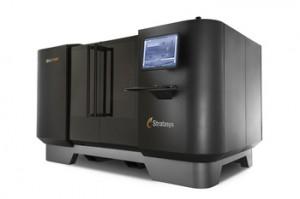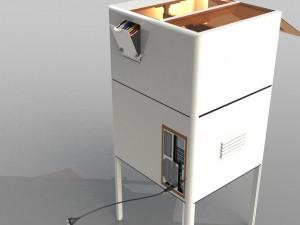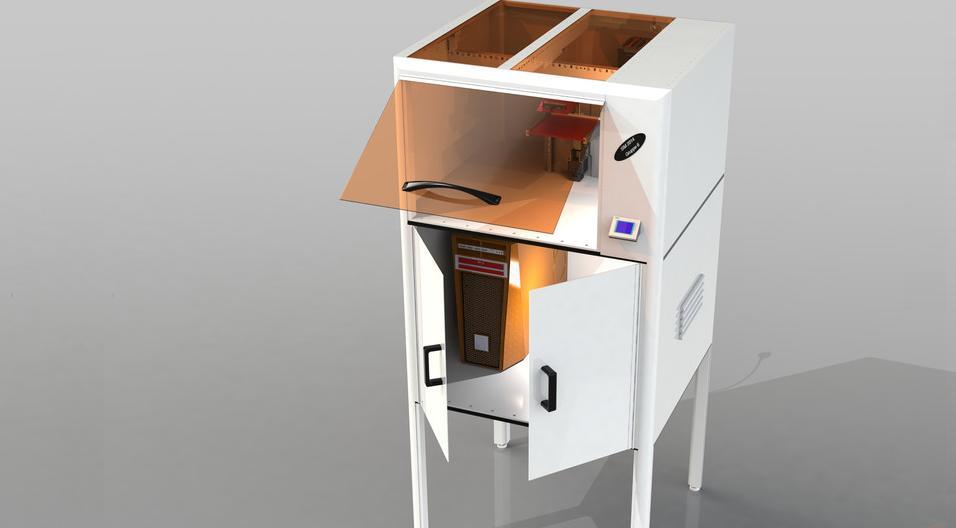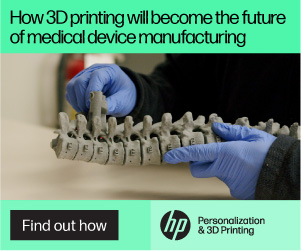There are so many different types of 3D printing technologies on the market. Currently, only fused deposition modeling and stereolithography are used within 3D printers that are targeted toward the consumer market, ![]() mainly due to costs. With that said, there is no doubt that other technologies are faster, print in a wide array of additional materials, and create products of much higher quality.
mainly due to costs. With that said, there is no doubt that other technologies are faster, print in a wide array of additional materials, and create products of much higher quality.
Probably one of the coolest technologies we have seen is Polyjetting, which is a technology patented by Stratasys, and is found in their Objet Connex 3D printers. The technology works similarly to that of a 2D inkjet printer, but instead of spitting out nano-scale droplets of ink onto paper, a typical Polyjet 3D printer spits out tiny droplets of a photosensitive resin, which is instantly UV-cured. The resulting prints end up being extremely precise, with amazing finishes, and just having an overall awesome appearance to them. Problem? Such printers will run a company or individual between $200,000 – $300,000+. Few businesses, much less individuals, have the capital required to purchase such technologically advanced machines.
This may be about to change, however. According to a source, who would prefer to remain anonymous, Prof. Dr. Jörg Luderich, at the The Cologne University of Applied Sciences, located in Germany, earlier this year assigned quite an interesting Masters’ project for one of his courses. It was to develop a concept for a Polyjet 3D printers which would have a final cost of under 10,000€. In total, six PolyJet printer concepts were submitted, of which Luderich will select one, to possibly be constructed at the University.
We were able to get hold of the designer of one of these six machines, Maher Alwan. In addition to providing pictures of his printer on GrabCad, Anwar also furnished us with some specification that his printer would possess, should it eventually be constructed:
- Max Build Envelope: 100 x 100 x 100 mm (Minor alterations could make it 150x150x100)
- Z-Axis Movement: 0.001 mm/step
- Print Speed: 2 m/s
The printer would feature (2) Xaar1001 print heads with an effective resolution of over 1000 dpi a piece.
“Each printhead can be used for two materials since it has two rows with two inputs,” explained Alwan to 3DPrint.com. “This way the printer has one supporting material and three photopolymers with different colors (to make different parts with different colors) or different characteristics (rubbery or hard).”
The bulk of the electronics will be stored in the middle of the machine, meaning that the build envelope is quite spacious, allowing users to get a clear view of the print. The build plate can quickly and easily be removed for cleaning as well.
It will certainly be interesting to see what printer Prof. Dr. Jörg Luderich will choose, and if and when that printer will be built. It is important to note that the technology involved with Stratasys PolyJet printers is in fact patented. How the University would get around this has yet to be seen. Regardless, this could be a major first step in the widespread availability of somewhat affordable PolyJet or Polyjet-like 3D printers. Let’s hear your opinion on these possibilities in the Cheap Polyjet 3D printer forum thread on 3DPB.com.
Subscribe to Our Email Newsletter
Stay up-to-date on all the latest news from the 3D printing industry and receive information and offers from third party vendors.
You May Also Like
Air Force Awards Fortius Metals $1.25M to Qualify 3D Printing Wire for Hypersonic Applications
AFWERX, part of the US Air Force Research Laboratory (AFRL), awarded a Direct-to-Phase II Small Business Innovation Research (SBIR) contract worth $1.25 million to Colorado’s Fortius Metals, to accelerate qualification...
US Air Force Awards JuggerBot $4M for Large-format Hybrid 3D Printing
Large-format 3D printer manufacturer JuggerBot has received a $4 million grant to develop a large format 3D printer, courtesy of the Under Secretary of Defense, Research and Engineering Manufacturing Technology...
Where Have All AM’s Unicorns Gone?
In the rapidly evolving world of 3D printing, startups valued at over a billion dollars, known as unicorns, once seemed as fantastical as the mythical creatures themselves. While a few...
How My Childhood Fascination with Planes Led to Investing in 3D Printing
My fascination with aerospace started young, and I started studying planes–identifying them in the sky and learning everything I could about how they work. Fast forward to my first week...


































